7 of the Fastest-Growing Plants for Your Garden
Gardening can teach us a lot of things—gentleness and consistency, the fruitfulness of putting in hard work, and that patience is a virtue. That said, while many plants do take quite a bit of time to push their sprouted heads up through the dirt and produce flowers and fruit, others get the ball rolling more quickly. Whether you're eager to fill empty space in your own yard or simply appreciate speedy vegetation, these seven fast-growing plants are great picks.
Related: The Fastest-Growing Trees to Plant in Your Garden
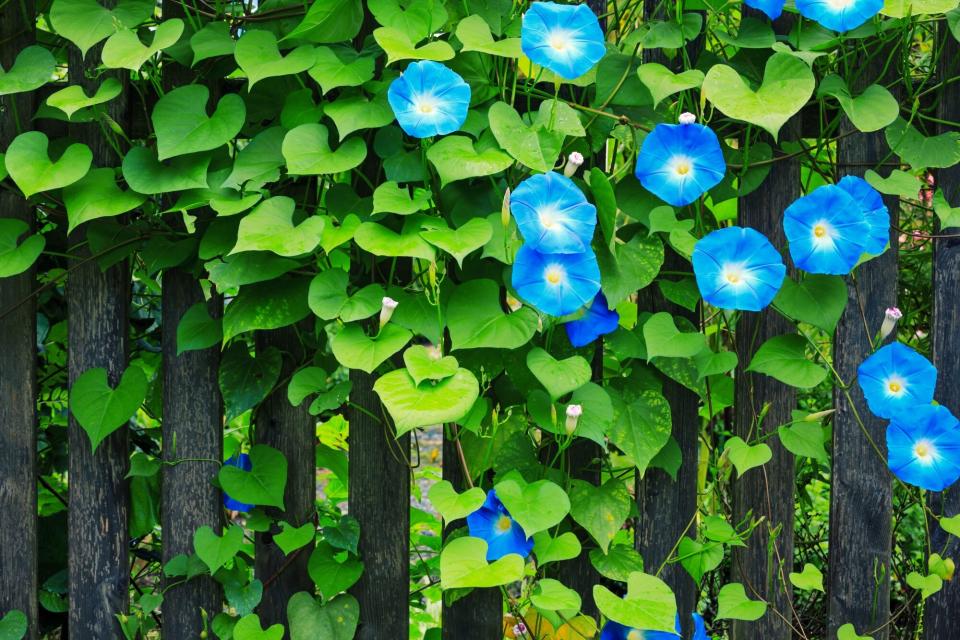
borchee / GETTY IMAGES
Morning Glory (ipomoea)
Zones: 2 to 11
Maturation: 120 days from seed to flower
Care: Easy
Known for its beautiful vining and vibrant purple-blue flowers, morning glories are perfect for fences, the side of your home, or a trellis. They're also aptly named, since they open up in the morning and then close again to sleep through the night.
"Morning glory is a personal favorite because once established it requires very little care," says Jen McDonald, a certified organic gardener and co-founder of Garden Girls. "When planted next to a pergola, fence, or arbor, this vine can easily grow or spread 6 to 12 feet in just one season."
Care Requirements
Morning glories are perennials in warm, tropical climates and considered annuals in regions that dip under 45 degrees. McDonald says to plant by seed or transplant in well-draining soil and a sunny location. "Consistent watering is required for the first two weeks, and plants mature within one month," she says.
While pruning isn't necessary, it's helpful to coax your morning glory up and over arbors, fences, and other vertical services to encourage fast-growing shoots.
Related: The Best Climbing Plants for Your Backyard Pergolas, Fences, and Trellises
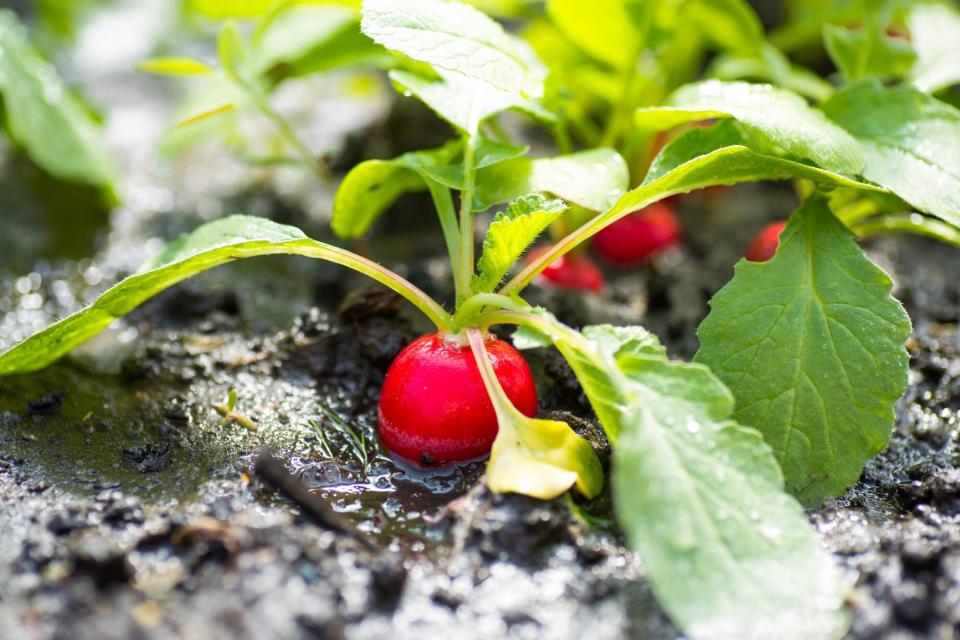
GETTY IMAGES
Radishes (raphanus sativus)
Zones: 2 to 11
Maturation: 30 to 45 days from planting to harvest
Care: Easy
Whether you're new to gardening or love this vegetable's zesty snap, radishes are a great option if you want to plant something edible and reap the reward stat. "It's one of the fastest-growing crops, and a super fun surprise to harvest since you can't see the root until you dig them up," says Chia-Ming, a Los Angeles based edible garden consultant. Radishes are also compact, which is ideal for smaller gardens or freestanding beds.
Care Requirements
Radishes are very easy to grow and do not require a lot of care, making them great for beginners and experienced gardeners alike. These hardy plants can grow year round, but thrive best when the temperature reaches between 55 and 75 degrees. You may also want to consider experimenting with different varieties. "French breakfast and Easter basket are fun because they are different shapes and colors compared to your regular supermarket variety," Chia-Ming says.
Related: Our Step-by-Step Guide to Planting, Growing, and Harvesting Radishes
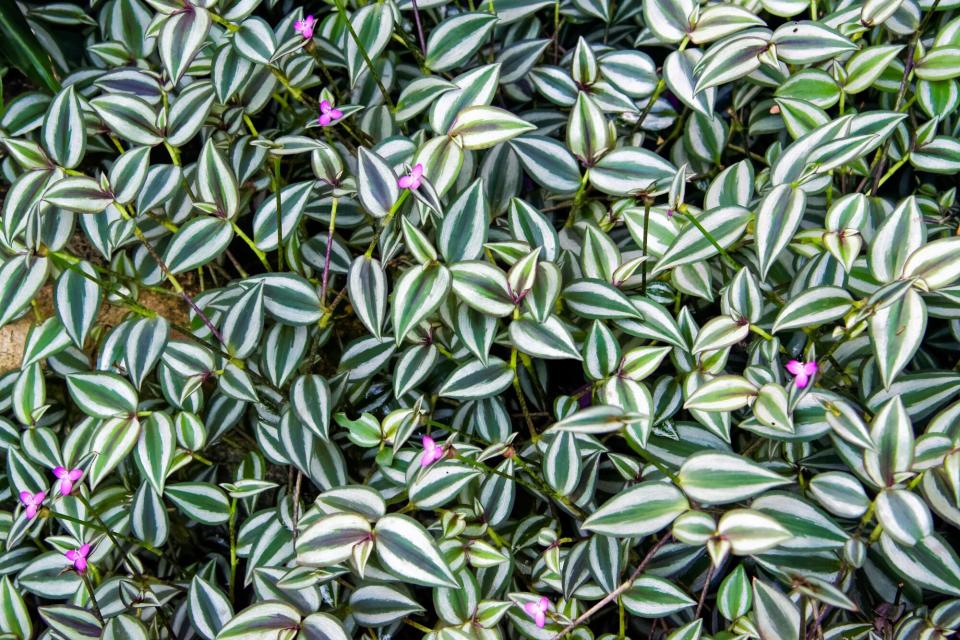
HeitiPaves / GETTY IMAGES
Inchplant (tradescantia zebrina)
Zones: 9 to 11
Maturation: Six months to maturity
Care: Easy to moderate
Don't be fooled by its given name—the inchplant is a vining plant that grows vigorously in optimal conditions. In fact, it gets its name because it can grow up to an inch per week. Its vining stems drip beautifully from hanging pots, happily climb down retaining walls, and eagerly creep over the ground.
"The distinctive leaves feature shades of purple and green with silver accents, giving your garden a nice pop of bright color," says Lindsay Pangborn, a plant expert for Bloomscape. "To ensure its vines do not get lost in your garden, feel free to add a round trellis or create a section for hanging plants within your space to display them beautifully."
Care Requirements
This plant thrives in low to indirect bright light, and the more light, the more prominent the stripes. Too much sun can scorch leaves, so be mindful of that when choosing a location. The inchplant also tolerates a wide range of temperatures (65 to 90 degrees), says Pangborn.
"Tradescantia will appreciate a regular application of balanced fertilizer every six to eight weeks during active growth," Pangborn says. "While not known for its flowers, it can produce subtle but beautiful lavender blooms in higher light conditions."
Related: Our Guide to the USDA Gardening Zones—Plus, the Best Plants to Grow in Your Region
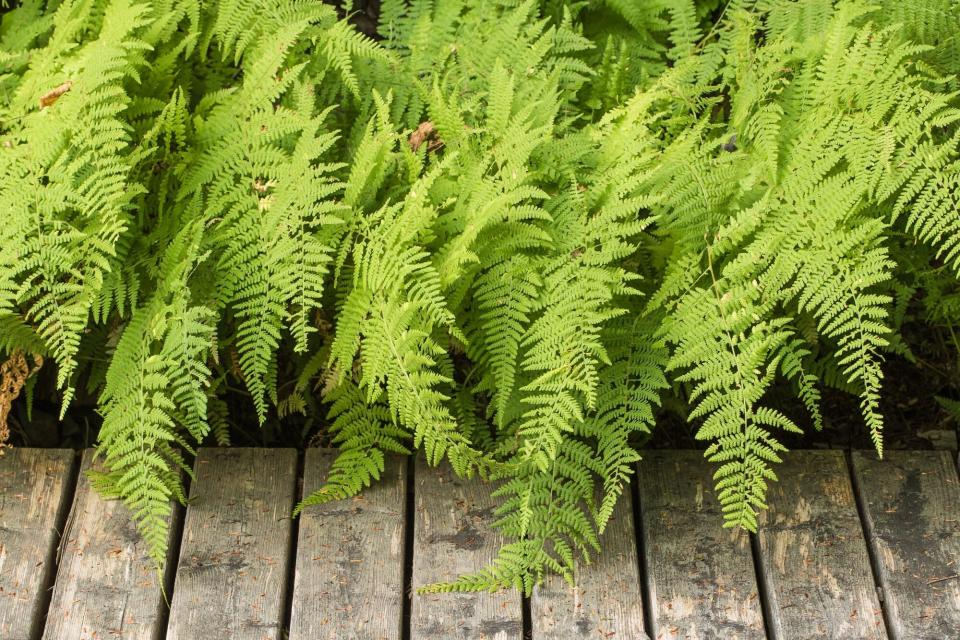
Laszlo Podor / GETTY IMAGES
Hay-Scented Fern (dennstaedtia punctilobula)
Zones: 3 to 8
Maturation: Several weeks to maturity; spreads quickly
Care: Easy
For a plant that takes over large swaths of ground quickly, consider the hay-scented fern. This large, feathery variety grows to about 30 inches tall and 36 inches wide and can easily take over an area in two to three years.
"The fronds form dense masses and are pale green and lacy textured," says Leirion Sorensen, gardens manager at Mt. Cuba Center in Hockessin, Del. "Its texture and color can be really effective in brightening up shadier woodlands or woodland edges."
Care Requirements
This fast-growing plant adapts well to both wet and dry soils, and tends to be more tolerant of sun compared to other fern species, says Sorensen. It also establishes well in one season. One thing to note is that, "in sunnier sites this plant can be aggressive, competitive, and difficult to eradicate," says Sorensen, so be mindful of that and prune regularly to keep the plant contained.
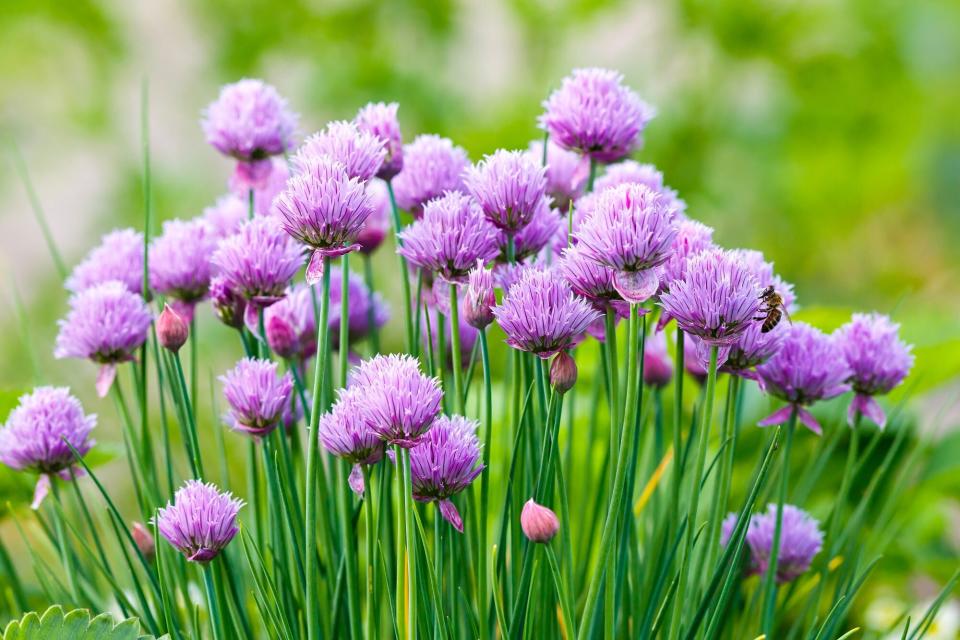
GETTY IMAGES
Chives (allium schoenoprasum)
Zones: 3 to 9
Maturation: 30 days from transplant, 60 days from seed
Care: Easy
Chives make a nice garden addition thanks to their pretty, grass-like foliage and the mild onion taste they can lend to all sorts of meals. "Certainly one of the easiest and most versatile herbs to grow, chives are fast-growing when planted by seedling or sown directly into the soil," McDonald says.
Care Requirements
Not too fussy, chives are easy to grow both indoors and outdoors as long as they can enjoy bright, sunny light. Partial sun is okay, but they thrive with more light. This perennial also loves well-draining soil.
"When transplanted into the garden, you can begin snipping and using right away, but take care never to cut more than a third of any plant at one time to prevent shock," says McDonald. She adds that planting chives near tomatoes, carrots, and cabbage can help repel pests such as aphids, flies, and cabbage worms.
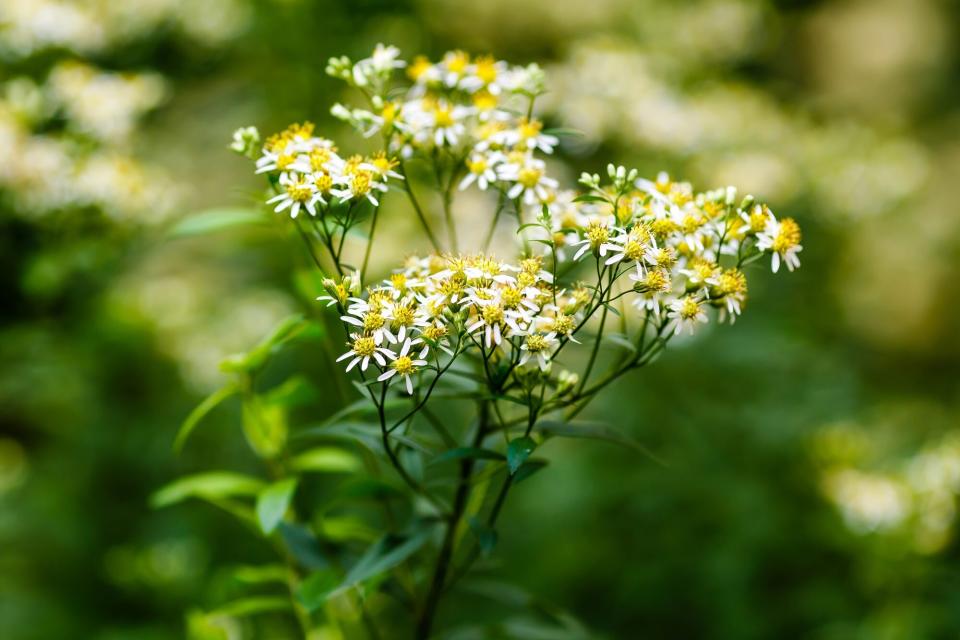
Olga Bungova / GETTY IMAGES
Schreber's Aster (eurybia schreberi)
Zones: 3 to 8
Maturation: Three to four months
Care: Moderate
Schreber's Aster is a fall-blooming plant that rapidly forms dense strands of basal foliage via spreading and seed. "This is a favorite plant of the gardeners here [in the Northeast] because of its rhizomatous habit and late bloom, bridging the gap between summer and fall flowering perennials," says Sorensen. It also produces a delicate white flower that stands out nicely against its lush, dark green leaves.
Care Requirement
This aster variety is tolerant of shady and sunny sites, as well as a range of soil moisture. It usually takes about one season to establish prior to spreading, notes Sorenson, and it's helpful to remove the seed heads prior to dispersal to help control spread. To maintain flower quality and foliage vibrancy, the plant should be divided every three to four years.
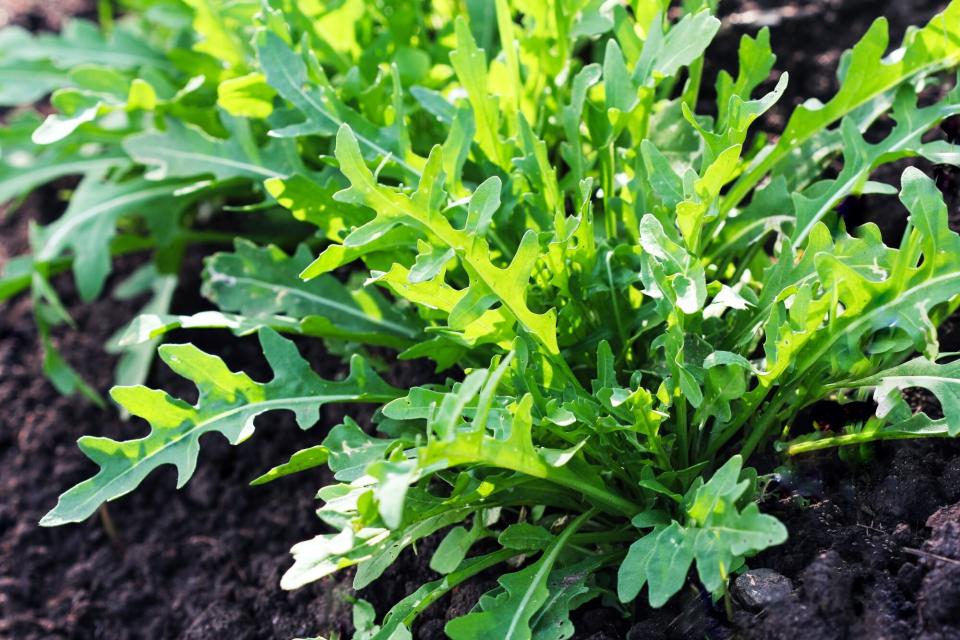
GETTY IMAGES
Arugula (eruca sativa)
Zones: 3 to 11
Maturation: 30 days to microgreens, 50 days to maturity
Care: Easy
For a versatile and delicious garden plant, look no further than arugula. "Nothing packs more of a peppery punch than fresh arugula," says McDonald. She adds that it's a cool-weather crop that's perfect for fall, winter, and spring gardens which means you'll get a lot of bang for your gardener's buck.
Care Requirements
For the best flavor, arugula should be planted during cool weather when temperatures are between 45 and 65 degrees. "Arugula has a very shallow root system, which makes it easy to grow among taller, slower-growing crops," says McDonald. Planting it is as easy as opening a seed packet and broadcasting the seeds atop the soil." Water lightly and consistently for the first two weeks.

